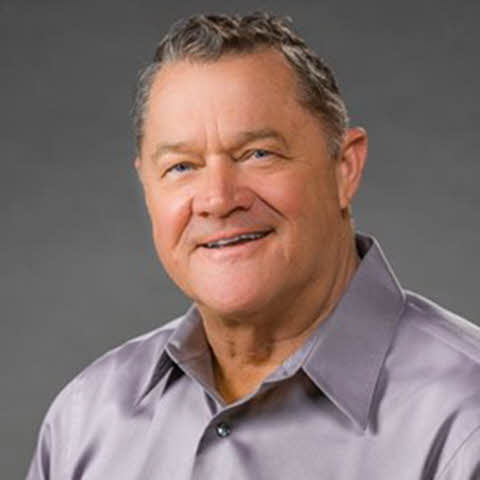So, you accepted a job on a demand-side management (DSM) team! Congratulations! On behalf of everyone in the DSM field (can we call ourselves DSMers?), I’m thrilled to extend a warm welcome to you as the newest member of our corner of the industry. We’re excited to have you on board and look forward to the valuable contributions you’ll make to our mission of promoting energy efficiency and sustainability.
As part of the DSM team at your utility, you play a pivotal role in helping your customers save energy and make a positive impact on the environment. Your department focuses on implementing various strategies and initiatives to reduce energy consumption and optimize the use of resources. Your team’s efforts in this field have a direct effect on both the environment and our customers’ energy bills, making it a truly rewarding endeavor!
Is DSM as mighty as a river?
The Virgin River, a small river that runs through Zion National Park and helped create the beautiful rock walls, transports 100 tons of sediment every year. DSM works in a similar vein, with every measure completed having an average measure life of around 10 years. And the savings can pile up fast. According to the Utility Dive article Pacific Northwest plan calls for 3.5 GW of renewables, more energy efficiency by 2027, since 1980 efficiency has met over 50% of the Pacific Northwest’s load growth.
One of the highlights of working in DSM is the enthusiasm and eagerness displayed by customers to embrace energy-saving practices. Many of them are excited to contribute to a greener future! Those folks require only a gentle nudge to adopt sustainable habits. Your role will involve engaging with customers and providing them with information and resources to help them make informed decisions about their energy usage.
You’ll learn that our language doesn’t always fit with the language the customer uses. For instance, what they call a bulb in lighting, we often call a lamp. And what they call a lamp, we call a fixture. Remember, they’re the most important factor when it comes to our programs, so we should always aim to meet customers where they are and make the experience as efficient and accessible for them as possible.
The challenges of working in DSM
Like many fields, DSM isn’t without challenges. One such challenge is how to measure something that didn’t happen. In most cases, when we replace a less-efficient device with a more-efficient one, we don’t get a side-by-side comparison to calculate the savings. It’s up to us to estimate accurately and transparently so others interested in how we came to our savings can understand our methods. It requires a forward-thinking approach and the ability to analyze data effectively—and it’s always worth it.
Those who calculate the savings in your department use standards for measurement like the International Performance Measurement and Verification Protocol, and many are certified measurement and verification professionals through the Association of Energy Engineers. Rest assured that your department has a robust framework in place to accurately measure and evaluate the impact of your initiatives, ensuring that tangible results are provided to customers and stakeholders.
Designing successful customer-centric programs
That brings up another challenge. Sometimes our offerings fall flat when we don’t put the customer first. If we struggle to connect with them and miss our mark a bit, we may fail to deliver the incentive they expected to receive. But have no fear! We can still be there for customers by rethinking how we design programs. Excellent program design puts the customers first and keeps them at the center of all we do. And there are ways we can use the data available to us to make sure we’re reaching the right customers for the right programs at the right time.
Collaboration is key for winning over regulators
In your role, you’ll probably collaborate with regulatory bodies and other departments within your utility. While the primary goal is to make customers happy by helping them save energy, it’s important to strike a balance between customer satisfaction and regulatory compliance. Are you ready for a vocabulary lesson? When you work with regulators, you’ll learn the meaning of words and phrases you’ve never heard before, like verified savings, gross savings, free-ridership, spillover, and takeback.
One of the most important words you’ll learn is prudent. When regulators approve of our work, they’ll say that the expenditure was prudent. This brings DSMers great joy! Before regulators deem our programs prudent, they must pass several cost tests. I’d be happy to introduce you to some of them, including:
- Total Resource Cost test
- Societal Cost Test
- Utility Cost Test
- Participant Cost Test
- Ratepayer Impact Measure test
- Resource Value Test
The Resource Value Test is a new test where you choose resources and variables to achieve a specific outcome. DSMers understand the importance of adhering to regulations while striving to exceed customer expectations. We trust that your unique skills and perspective will contribute to finding the right balance.
Your journey in DSM starts here!
DSM teams foster a collaborative and supportive environment, encouraging new ideas and personal growth. You’ll have the opportunity to work alongside experienced professionals who are passionate about energy efficiency and dedicated to making a difference. Your dedication, enthusiasm, and expertise will be invaluable to our mission to create a sustainable future for all.
Once again, welcome to the DSM team. We’re excited to have you on board and are confident that your contributions will make a lasting impact. If you have any questions or need assistance settling in, please don’t hesitate to reach out to your team members. And don’t forget that the E Source team is also here for you.

